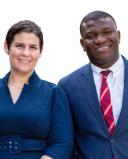Cognitive Behavioral Therapy
The Most Important Ingredient in CBT
What is the fundamental of consciousness?
Posted December 22, 2020
Most clinicians think “thought” when talking about cognitive behavioral therapy (CBT). However, as illustrated in a previous article, in order to fully understand CBT and help our patients and clients, we are to acknowledge that the Belief-Result/Belief-Identity Pathway is an intrinsic part of the whole framework. For we are our beliefs, and the more limiting our belief systems, the more limited a life we will have.
As a reminder, some crucial reasons why the Belief-Result Pathway or the Belief-Identity Pathway is so significant are as follows:
- If our values make us, well, let us remember that our values come from our belief systems.
- If, like William James [1], the father of American Psychology said, “Our attitude at the beginning of a difficult task will affect its successful outcome,” well, let us recall that our attitude comes from our belief systems.
- And, as David Hume [2] said, “Each mind contemplates a different beauty,” and our varied perception determines the type of meaning we assign to every single situation. Our perception is itself determined by our attitude, which is determined by our belief, which means there again, our belief systems ultimately determine how we perceive ourselves, others, the world, our past, future, and our present life circumstances.
Now, it does not stop there:
- We assign meaning to events via our perception, this type of meaning, in turn, determines our focus and attention. This means that what we focus on, and what we give attention to, ultimately is based on our belief systems.
- Consequently, our focus engenders a series of associated thoughts, which determine how we feel, the mood we are in, and our range of emotions. There again, we can clearly see that how we feel is related to the types of thoughts we are focusing on. What we are focusing on, in turn, is related to the type of meaning assigned. And, the type of meaning we assign, in turn, derives from how we perceive the situation. How we perceive any situation derives from our attitude, which, ultimately derives from our belief systems.
- Our feelings, of course, determine our actions and our behaviors, which then become our habits, leading to our results, which, in turn, fuel or reinforce our identity. All of this, in turn, strengthens our belief systems, which have been driving the whole pathway to start with.
Bottom line, as the British philosopher, James Allen [3] said:
The outer conditions of a person’s life will always be found to reflect their inner beliefs...The world we see that seems so insane is the result of a belief system that is not working.
In other words, the CBT concept of addressing the core beliefs in our patients and clients cannot be overstated.
Yet, some questions remain:
- How do we most effectively and efficiently help others address their core beliefs?
- How effective have we truly been at doing so?
- Might we have been missing something?
- Might there be something else that we could be doing that would yield much better results?
We can help others through the use of a number of CBT techniques and exercises. However, just like we have in any problem-solving process model, the best way to truly solve a problem is not to address its superficial cause, but rather, to go to the root of the issues and address that. The mechanism of illness, of disease, of pain, or suffering, shows its effects in our Normal Blueprint. But the root cause is in the disintegration between Thought, Consciousness, and Mind, preventing us from making use of our Natural Blueprint. To be the most effective at helping others address their core beliefs, then, is to go and address the problem at its root; it is to go to the Natural Blueprint.
In previous articles, we have talked about Integration, Disintegration, The Process of Integration, and The Triad of Integration. We also have written about the 3 Fundamentals, delineating each one of them, the Fundamental of Mind, the Fundamental of Thought, and the Fundamental of Consciousness. If you recall, we explained that the Fundamental of Mind is the Intelligence Center, and the Fundamental of Thought is the Operant Factor, the activating Agent, or the Driver. We also explained that the Fundamental of Consciousness, that which allows us to experience, and being aware that we are experiencing, while being aware of that which we are experiencing, is the Decisive Factor, and is where the money is, where the secret is, and where it all lies. The Fundamental of Consciousness decides, it helps us decide and allows us to decide what beliefs are predominant, what thoughts are predominant, which thoughts we entertain, and which ones we end up focusing on and paying attention to or not.
The most important ingredient in CBT then is The Fundamental of Consciousness. It is what will allow us to best help our patients and clients with their core beliefs. But, what is The Fundamental of Consciousness? What does it really mean? Why is it the most important ingredient in CBT and why is it the driving force behind it all, including behind our belief systems?
In subsequent posts, we will look into this most important ingredient. What is it? Why is it the most important ingredient? And how does it work? We will be addressing all these questions and more. Like the Nobel Prize Laureate, Francis Crick, the one who helped us understand the double helix structure of our DNA once said [4]:
Consciousness is central to human existence.
And if so, and it is, we are unable to mitigate suffering, properly treat, or promote health, without a proper look at Consciousness.
References
[1] James, W. (1960). The will to believe: And other essays in popular philosophy, and Human immortality, two supposed objections to the doctrine. New York: Dover Publications.
[2] Hume, D. (2013). Of the standard of taste: Post-modern times aesthetic classics. Place of publication not identified: Birmingham Free Press.
[3] Allen, J. (2019). As a man thinketh: The complete original edition. New York: St. Martin's Essentials.
Crick, F. (1995). The astonishing hypothesis: The scientific search for the soul. New York: Simon & Schuster.


